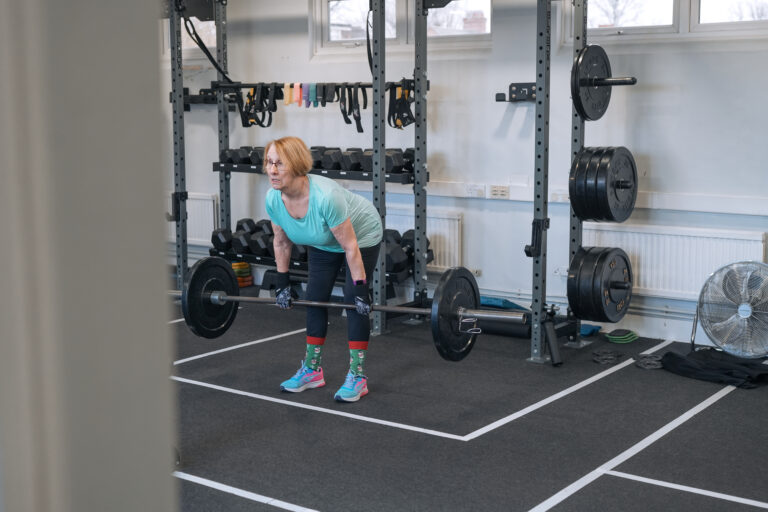Christmas is usually the time where your regular eating and training patterns start to fall apart, and your well-controlled portion sizes grow before your very eyes.
The average Christmas dinner can total up to 1450 calories, and that’s without seconds and pudding – many of us will easily consume over 6000 calories in total on Christmas Day alone.
However, don’t despair; Read on to find out how to prepare a healthier Christmas dinner this year, without sacrificing on flavour (and the best news is, the rest of your family won’t notice the difference!).
Aim to stick to your regular pattern as much as you can. Apart from the turkey and chestnuts, there isn’t a lot of protein going around during the festive period. Instead you’ll be faced with a lot of calories, saturated fats and carbohydrates, so you might need to make an extra effort to keep a good amount of protein in your diet.
Small changes = big impact This is a time for celebration, so you shouldn’t have to make sacrifices in your most-anticipated meal of the year. It just takes a few small and simple steps to transform your Christmas dinner into a more nutritious meal:
Stick to Turkey
Loaded with lean protein, Turkey is one of the best meats to eat throughout the year – not just during the holidays. One 3.5 oz serving of skinless turkey breast packs 30 grams of protein – but only 161 calories and 4 grams of fat.
However, whether your roasted turkey remains healthy or not depends on the preparation and cooking:
● Most of the fat is located just below the skin. Removing the skin eliminates that concentrated fat.
● ● Many recipes suggest smothering the bird in butter before roasting, but this is an unnecessary step.
As long as you avoid overcooking your turkey it won’t dry out, so there’s no need to load up on saturated fat. Other popular choices at this time of year are goose and duck. Both are higher in cholesterol than turkey meat, although duck is rich in selenium and zinc; minerals which activate enzymes needed for healthy cellular metabolism.
Use Chestnuts for Stuffing
Nothing compliments Christmas roast turkey better than chestnut stuffing, which is a much healthier option than the more commonly used meat-based versions. Chestnut meat adds incredible texture and richness (without much fat) to a holiday stuffing.
Pigs in Blankets(ish)
These irresistible seasonal treats are small in size, so it’s easy to fool yourself into thinking they’re not so bad. However, before you know it you’ve swallowed down six of the little things – and that’s a whopping 654 calories!
For a healthier alternative, you can try wrapping your sausages in lean prosciutto (Italian ham – although look out for the sodium content), or using a vegetarian alternative for the sausage.
Make Your Own Cranberry Sauce
Canned cranberry sauce isn’t one of the healthiest foods, but making your own from fresh berries allows for more control over what ingredients you use which could make it a healthier choice:
● ½ cup of cranberry sauce contains 1g fibre, which promotes healthy cholesterol levels.
● Cranberries are also a good source of antioxidants, which help protect healthy cells from damage caused by free radicals. Check out this clean eating cranberry sauce recipe.
Don’t Smother Parsnips
Parsnips contain a wide variety of vitamins, minerals and nutrients, including dietary fibre, folate, potassium and vitamin C. Folate and potassium are important for cardiovascular health, and protect against high blood pressure and heart disease. Again, try to avoid using large amounts of fat to roast your parsnips, as this counteracts all the nutritional benefits.
Be Wary of Gravy
No Christmas dinner is complete without thick and flavoursome gravy, but it comes at a cost. Granules have often been perceived as a lower-calorie option, but have a shockingly high salt content. It’s a home-made tradition to use the meat juices for your gravy, but if you do this be sure to drain the fat off first.
Don’t Forget Pudding!
Christmas pudding isn’t actually as bad for you as you might think. Raisins boast iron, sultanas and currants provide a multitude of minerals including potassium and vitamin C and other ingredients like citrus peel and mixed spices offer additional health benefits too.
However, try to stick to just one portion as Christmas pudding is high in sugar. You can boost your calcium intake by ditching the brandy butter and double cream and opting for low-fat custard or Greek yoghurt. Top Tips for a happy, healthy Christmas
● Remember, portion size is the key. Choose a smaller plate to help you keep control over how much you eat.
● One indulgent day isn’t going to ruin all your hard work. Most people lose definition and gain weight over Christmas because they spend multiple days binging on rich foods.
● Alcohol is the hidden enemy. One glass of mulled wine is approximately 106 calories!





